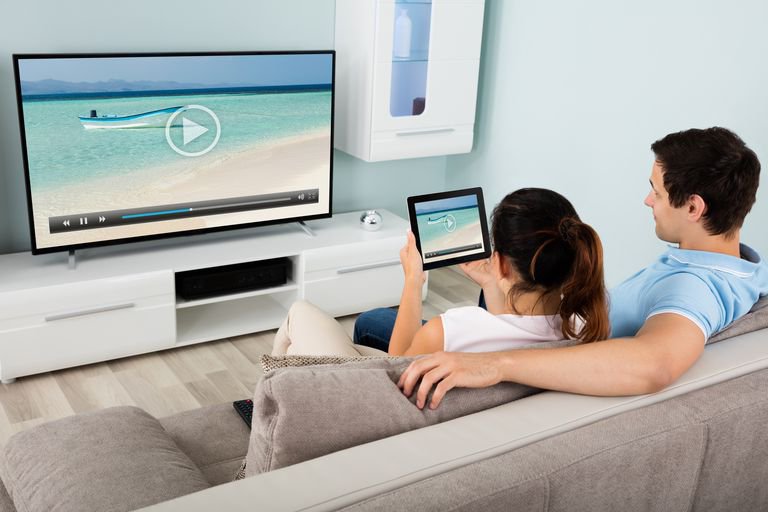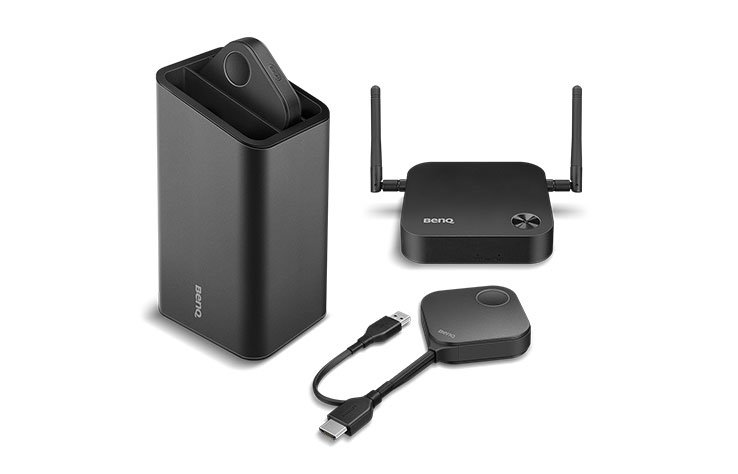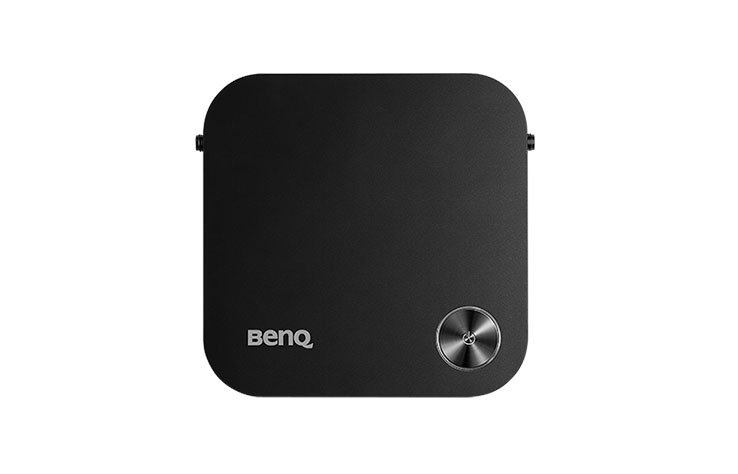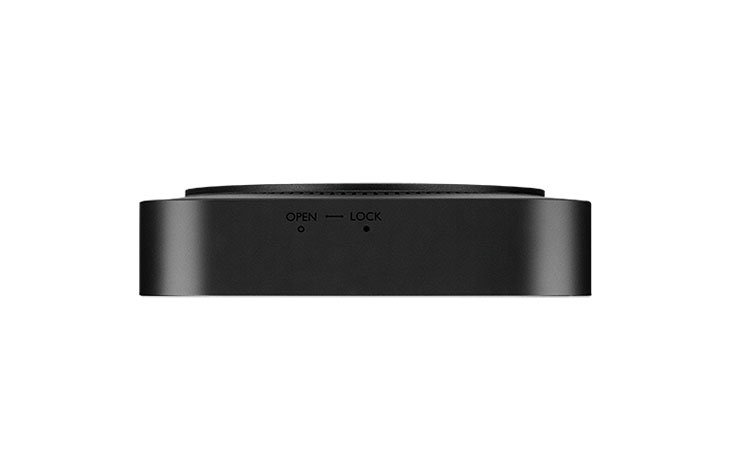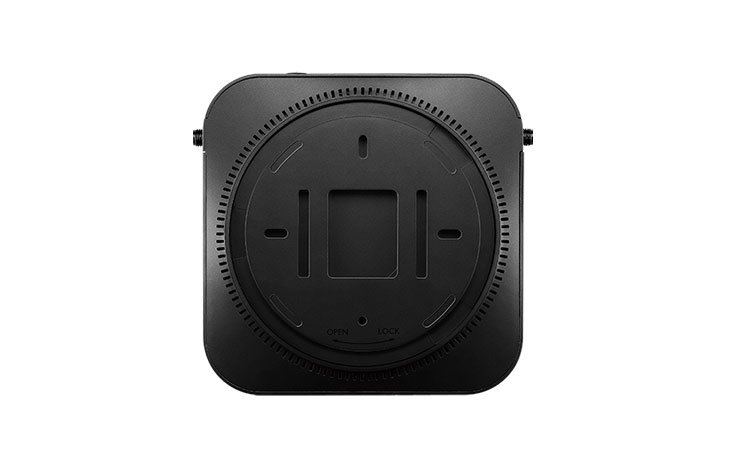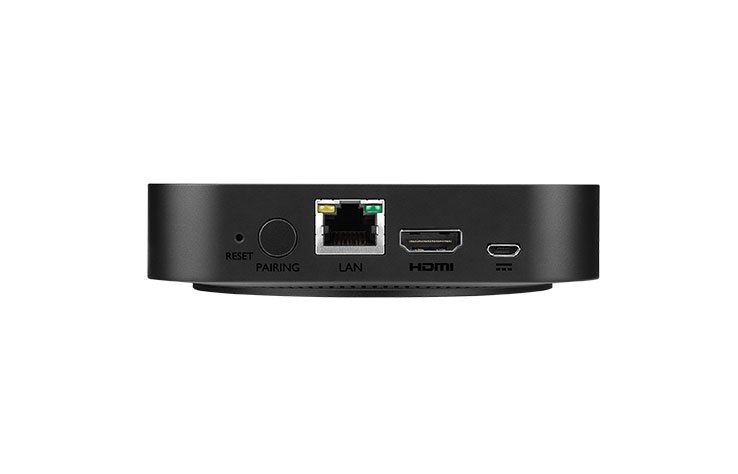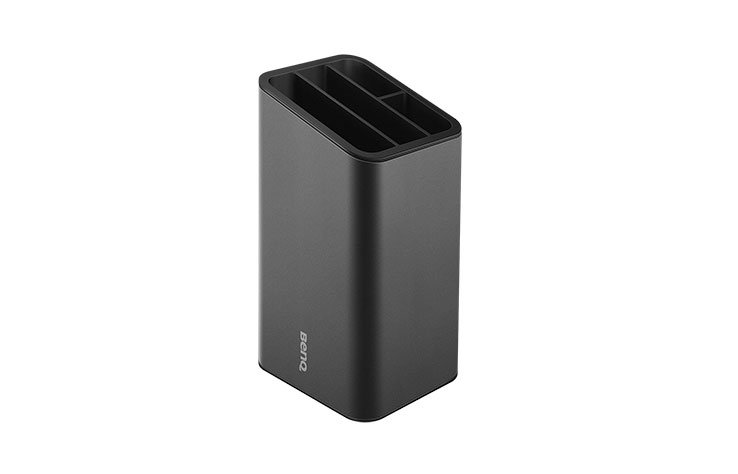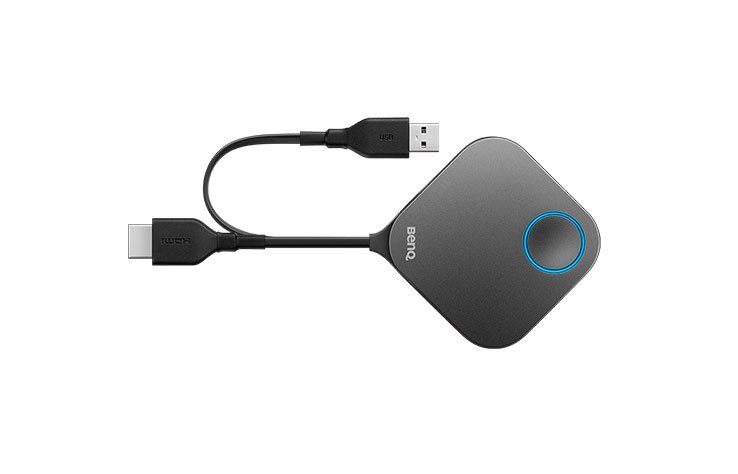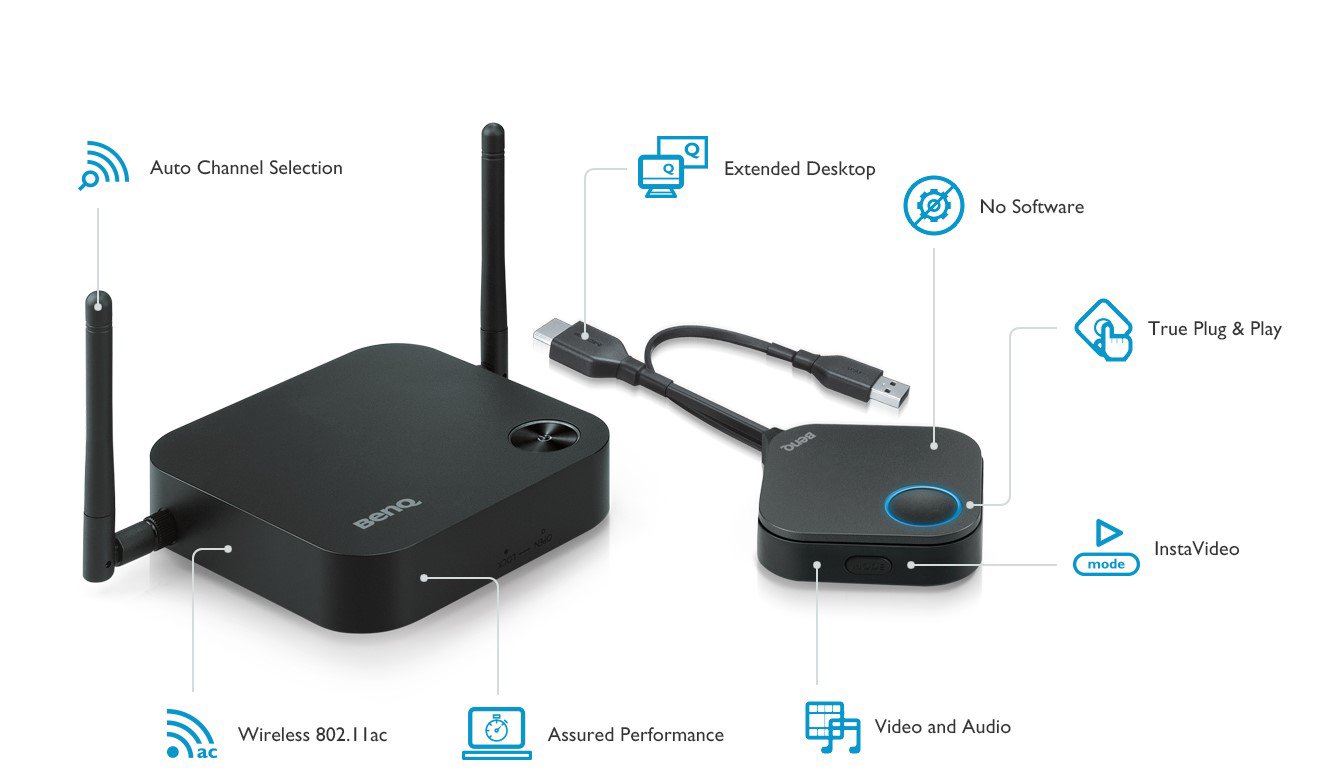While Miracast is a solid technology for many applications such video streaming, it is not an ideal stand-alone solution for huddle spaces or meeting rooms. It lacks the ability to work with Apple MacBooks, and simple tasks such as changing presenters can take extra time. Because Miracast is a technology – not an end product, its performance and security can be impacted by how the technology is implemented into a final product. At BenQ, we use Miracast for applications such as classroom wireless screen sharing, and wireless projector adapters to stream video content, but for our own meetings, we use the InstaShow with buttons for each presenter to keep our meetings running on time. (link to meeting room efficiency article)
While the InstaShow is more expensive than an entry level Miracast adapter, it does have a number of advantages for meeting rooms and huddle spaces. The BenQ InstaShow is a simple and efficient system that enables each presenter to connect to the screen in just seconds without software hassles. For a typical 8 person mid-level management meeting, each hour of time can cost over $500 – which makes every minute count.
The biggest advantage of InstaShow over Miracast is that it can connect to a wide variety of devices outside the Windows and Android ecosystem. With its USB-C transmitter buttons, it can quickly connect to any current MacBook, but also connect to older Windows notebooks and AV devices such as document cameras via the HDMI buttons.
Finally, the advanced encryption and other security features of the InstaShow protects from unauthorized internal or external recording of sensitive presentations. With its button design and holder, the InstaShow also has won both the iF Design and Good Design awards for beauty and functionality, demonstrating that it not only works well, but it will also add style and class to your meeting space.
Bottom Line – the Miracast is a great consumer device for streaming digital content, but for a commercial meeting room or huddle space, the InstaShow has the versatility, security, and ease of use to keep your meetings running on time.
